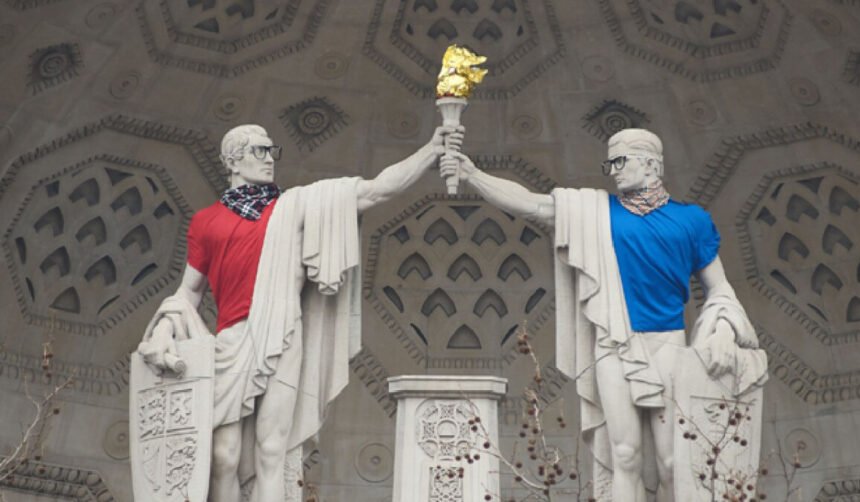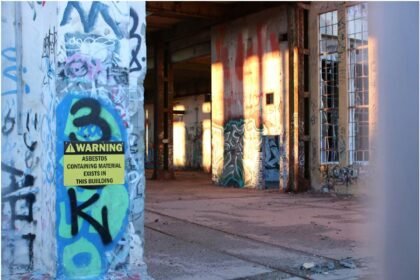Roman art, with its grand sculptures, detailed mosaics, and expressive frescoes, has left an indelible mark on the art world. Despite being centuries old, the techniques and styles of Roman art continue to resonate, inspiring contemporary artists who blend ancient methods with modern creativity. This article explores how Roman art influences today’s artists, highlighting their works and the continued legacy of ancient Roman aesthetics.
The Enduring Appeal of Roman Art
Roman art is celebrated for its realism, intricate details, and symbolic representation of power, beauty, and mythology. These elements have transcended time, offering a rich source of inspiration for artists who seek to connect past and present. From sculptures to digital art, Roman influences are evident in numerous modern artistic expressions.
Contemporary Artists Inspired by Roman Art
- Damien Hirst: Blending Classical and Contemporary
Damien Hirst, a British contemporary artist, is known for his provocative works that often blend classical elements with modern themes. In his series “Treasures from the Wreck of the Unbelievable,” Hirst creates sculptures reminiscent of Roman art, depicting gods, mythical creatures, and emperors in a deliberately aged and corroded style. These pieces evoke a sense of rediscovery, mirroring the unearthed artifacts of Roman antiquity. Hirst’s work serves as a bridge between ancient art and contemporary storytelling. - Vik Muniz: Reinterpreting Roman Mosaics
Vik Muniz, a Brazilian artist, is known for his innovative use of unconventional materials to create art. Muniz reimagines Roman mosaics using everyday objects, bringing new life to ancient techniques. His works capture the essence of Roman artistry while introducing a playful twist, making the art accessible and engaging for modern audiences. This reinterpretation not only pays homage to Roman craftsmanship but also challenges the boundaries of traditional art forms. - Barry X Ball: Modern Sculptures with Classical Roots
American sculptor Barry X Ball uses 3D scanning and CNC machining to recreate classical sculptures, often infusing them with modern aesthetics. His work, influenced by Roman busts and statues, reflects the precision and grandeur of ancient Roman sculptors but with a distinctly contemporary edge. By utilizing advanced technology, Ball demonstrates how ancient techniques can be revived and adapted to the digital age, preserving the essence of Roman art while pushing the envelope of sculptural innovation. - Kehinde Wiley: Classical Portraiture with a Modern Twist
Kehinde Wiley is renowned for his vibrant, large-scale portraits that often depict contemporary African-American subjects in poses and settings inspired by classical art, including Roman statues and frescoes. Wiley’s work addresses themes of power, identity, and representation, similar to Roman art’s portrayal of emperors and deities. By merging traditional Roman aesthetics with modern social commentary, Wiley reinvents classical portraiture for the 21st century. - Vincenzo Mascoli: Street Art Meets Ancient Rome
Italian artist Vincenzo Mascoli combines street art with classical themes, creating murals that depict Roman emperors, gladiators, and gods in a bold, graffiti-like style. His works bring Roman art into urban spaces, blending history with modernity. Mascoli’s art is a vivid reminder of Rome’s lasting influence and the versatility of its artistic heritage, reinterpreted in a contemporary context that resonates with today’s audience.
Ancient Techniques in Modern Works
Contemporary artists often draw upon ancient Roman techniques, such as fresco painting, sculpting in marble, and mosaic-making, to add depth and historical context to their creations. These techniques are not just artistic methods but are also symbols of craftsmanship, patience, and the human desire to capture the world in its most intricate detail.
- Fresco Revival: The ancient technique of fresco painting, where pigments are applied on wet plaster, has seen a revival in modern interior design and fine art. Artists like John Nava use fresco methods in their works, creating contemporary pieces that echo the grandeur of Roman wall paintings.
- Marble Sculpting: Marble remains a favored medium for sculptors who wish to evoke the timelessness of classical art. Modern sculptors continue to explore the delicate balance between realism and abstraction, much like Roman artists did, pushing the boundaries of this ancient material.
- Mosaic Art: The detailed work involved in creating mosaics has found a new audience in both traditional and digital art spaces. Modern artists use glass, ceramic, and even digital pixels to create mosaic-like artworks, preserving the meticulous nature of Roman craftsmanship.
Roman Art’s Continued Legacy
The influence of Roman art extends beyond the fine arts, impacting architecture, fashion, and even digital media. The grandeur and realism that defined Roman art have set a standard for storytelling through visuals, offering a timeless template that artists continually revisit and reinterpret. This enduring appeal underscores the universality of Roman themes—power, beauty, myth, and human emotion—that resonate as strongly today as they did centuries ago.
You can explore and buy famous Roman paintings to see firsthand the impact of these ancient masterpieces and how they continue to inspire modern creations.
For More Visit Timely Magazine








